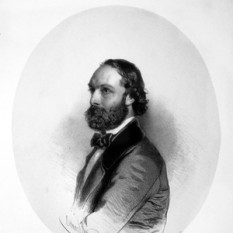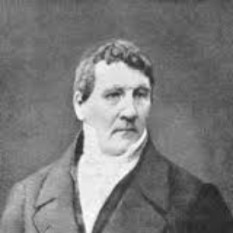Henryk Wieniawski (July 10, 1835 Lublin, Poland - March 31, 1880 Moscow) was a Polish composer and violinist.
He was born into a Polish-Jewish family, whose father, Tobiasz Pietruszka, converted to Catholicism. His talent for playing the violin was recognized early on, and in 1843 he entered the Paris Conservatoire. After graduation, Wieniawski toured extensively, giving many recitals on which he was often accompanied by his brother Józef on piano. In 1847 Henryk Wieniawski published his first opus, a Grand Caprice Fantastique, the start of a modest but important catalog of 24 opus numbers.
When his engagement to Isabella Hampton was opposed by her parents, Wieniawski wrote Légende, Opus 17; this work helped the parents change their mind and the couple married in 1860.
At the invitation of Anton Rubinstein, Wieniawski moved to St. Petersburg, where he lived from 1860 to 1872, teaching many violin students and leading the orchestra and string quartet of the Russian Musical Society. From 1872 to 1874 Wieniawski toured the United States with Rubinstein. In 1875 Wieniawski replaced Henri Vieuxtemps as violin professor at the conservatory at Brussels.
During his residence in Brussels, Wieniawski's health was in obvious decline, often stopping him in the middle of concerts. He gave a farewell concert in Odessa on April 1879 and died from a heart attack the following year in Moscow. He is interred in the Powązki Cemetery in Warsaw.
Henryk Wieniawski - CoinHenryk Wieniawski was considered a violinist of genius and wrote some of the most important works in the violin repertoire, including two extremely difficult violin concertos, the second of which (D minor, 1862) is more often performed than the first (F# minor, 1853). His "L'Ecole Moderne, 10 Etudes-Caprices" is a very well-known and required work for aspiring violinists. His Scherzo-Tarantelle, Op. 16 and Légende, Op. 17 are also frequently performed works. He also wrote two popular mazurkas for solo violin and piano accompaniment (the second one, "Obertass", in G Major), using techniques such as left-hand pizzicato, harmonics, large leaps, and many double stops. Wieniawski has been given a number of posthumous honors. His portrait appeared on a postage stamp of Poland in 1952 and again in 1957. A 100 Złoty coin was issued in 1979 bearing his image.
What is sometimes called the "Russian bow grip" ought to be called the "Wieniawski bow grip": Wieniawski taught his students his own kind of very stiff bowing that allowed him to play a "devil's staccato" with ease.
The first violin competition named after Wieniawski took place in Warsaw in 1935, and the International Henryk Wieniawski Violin Competition has been held every five years since 1952.
The composer known as was the daughter of Wieniawski. .
You can find information through the best music search engine - Muzlan.top 😊All materials on request "Henryk Wieniawski" are available on page Henryk Wieniawski
Yes of course. You can listen tracks on the page Henryk Wieniawski
Yes of course. You can download tracks on the page Henryk Wieniawski
This page is found by queries: Henryk Wieniawski songs download, Henryk Wieniawski song listen, Henryk Wieniawski flac, Henryk Wieniawski song download, Henryk Wieniawski mp3 download


